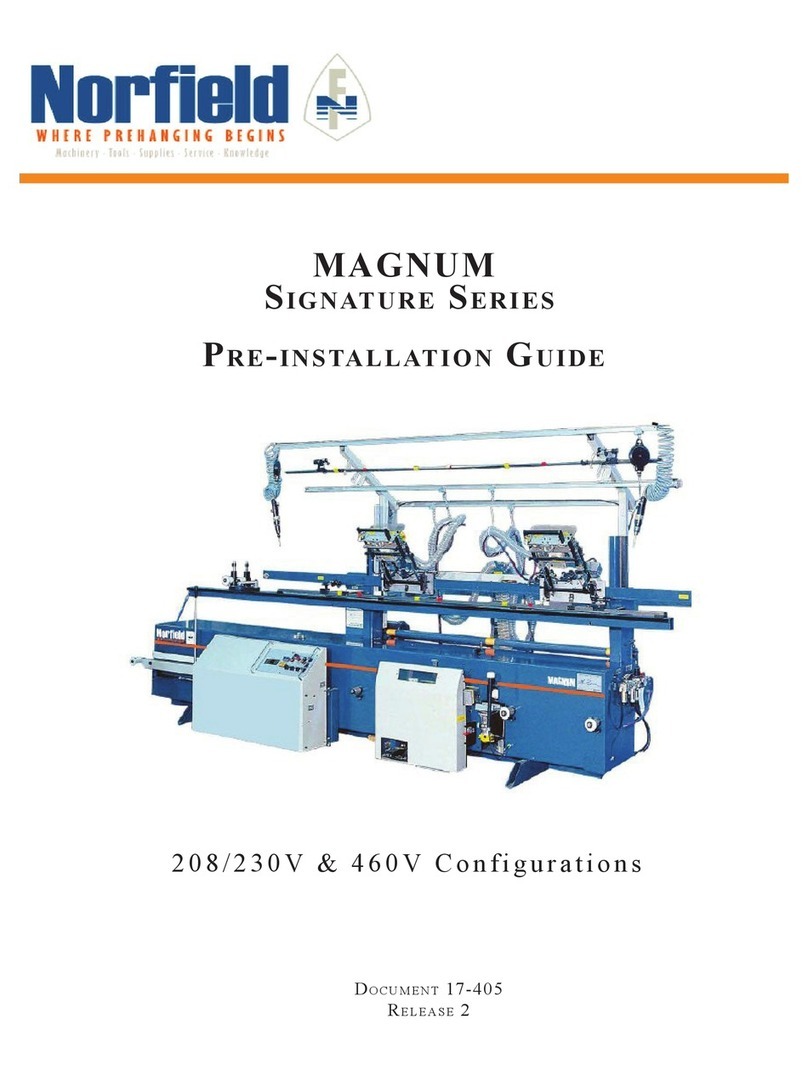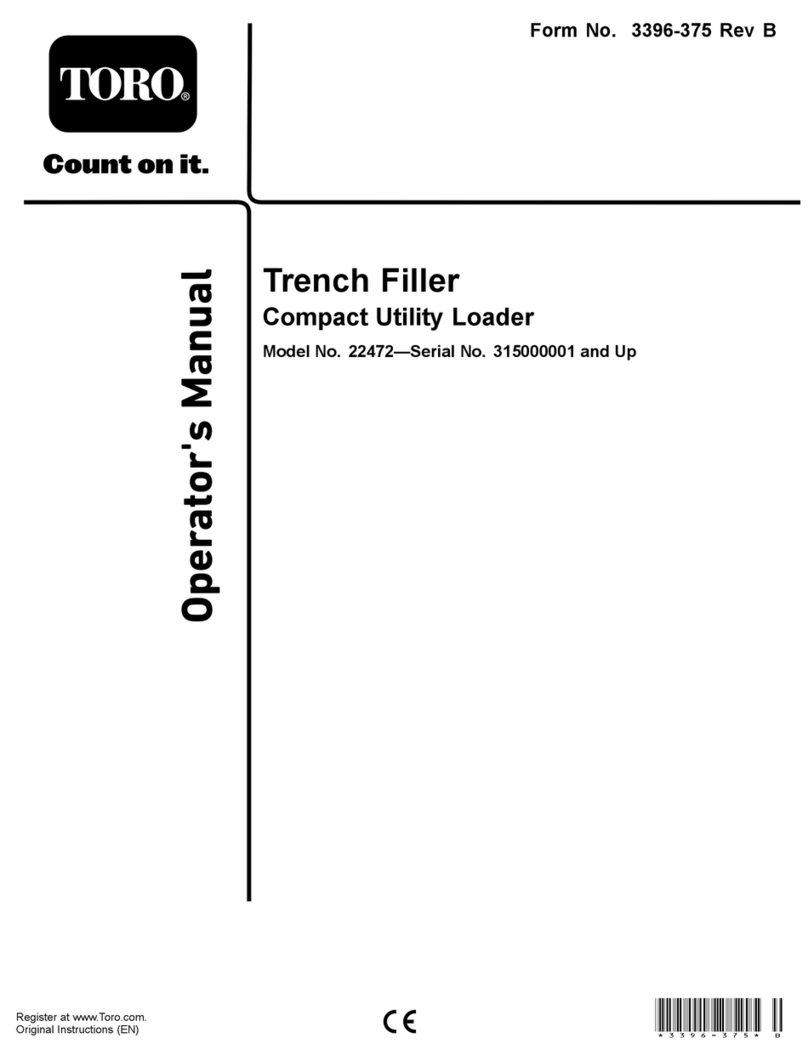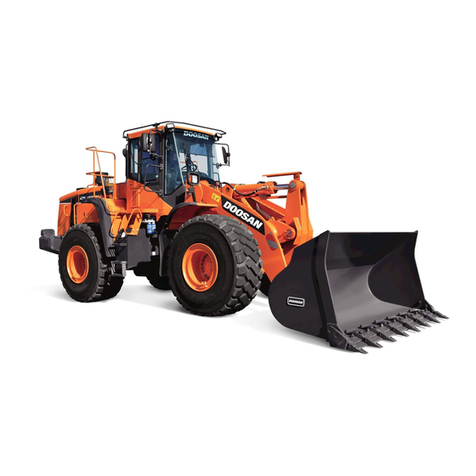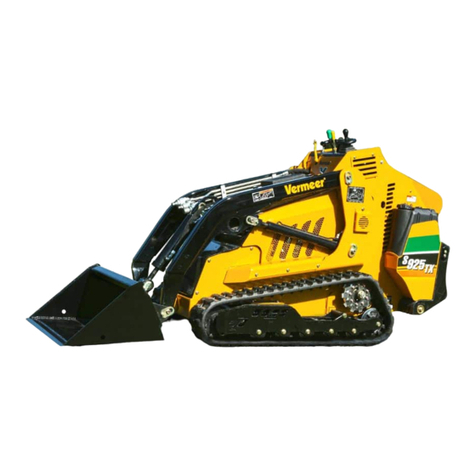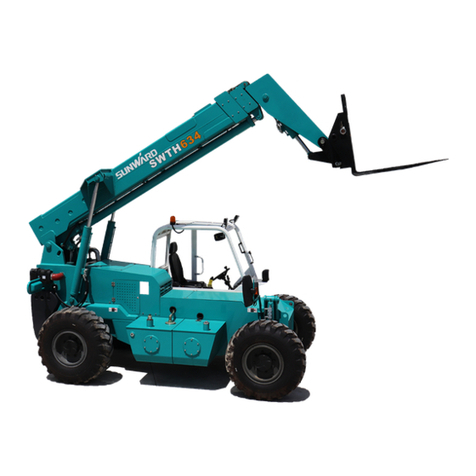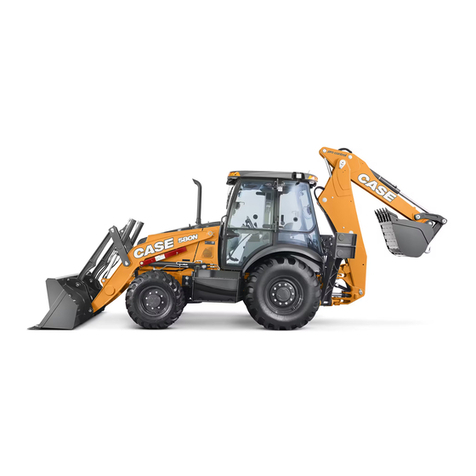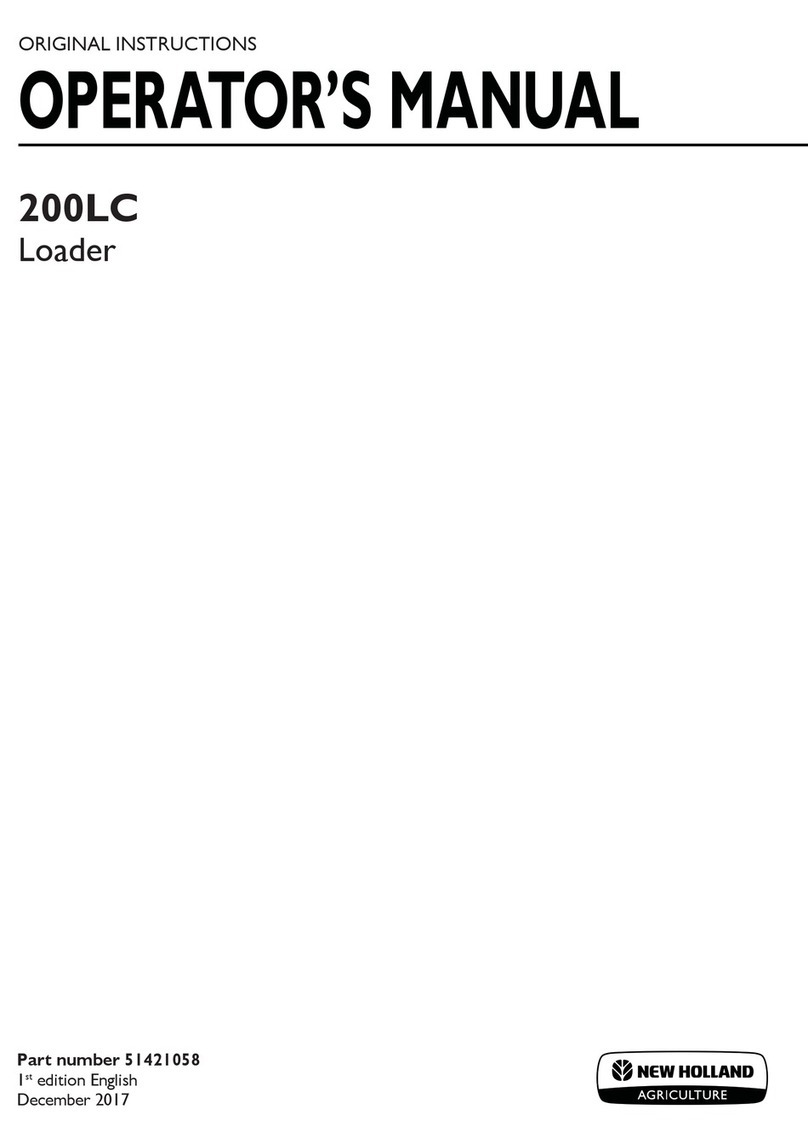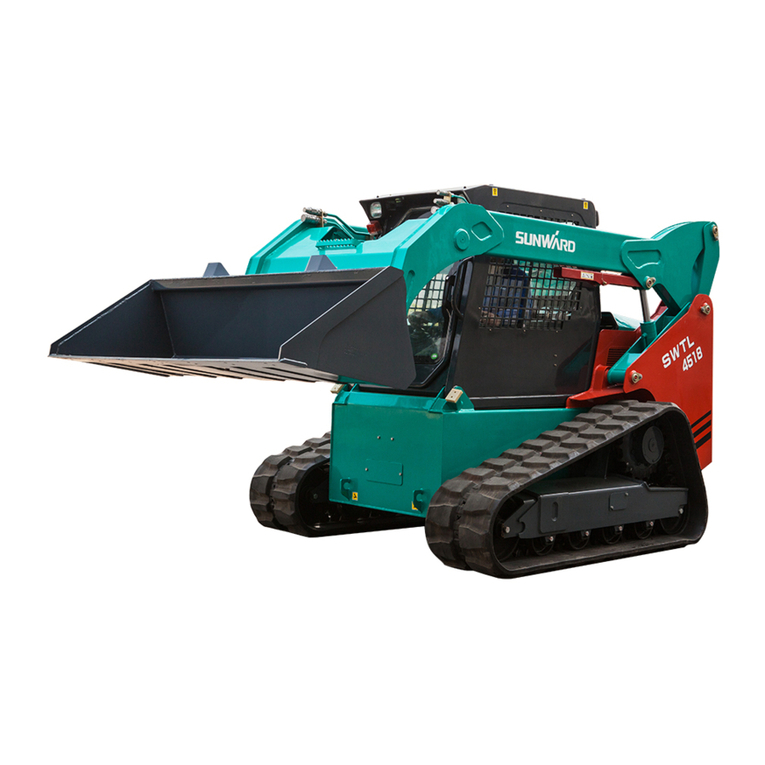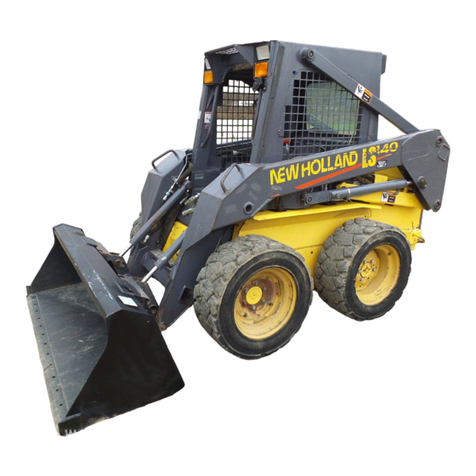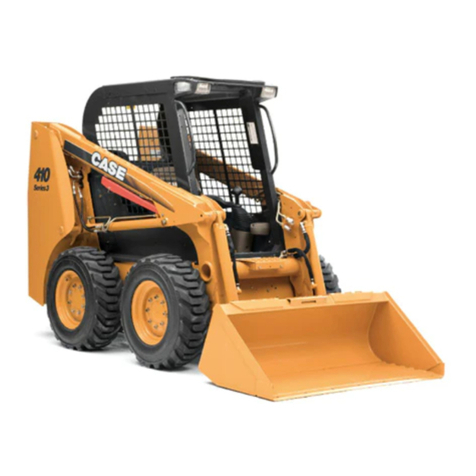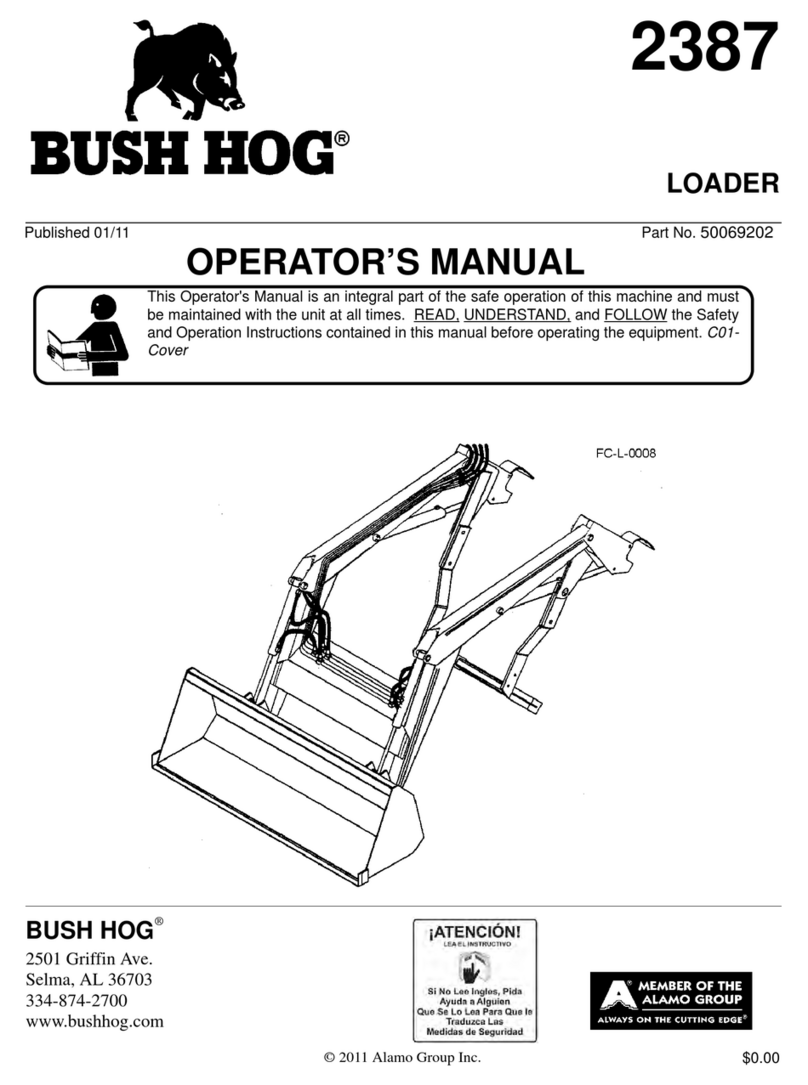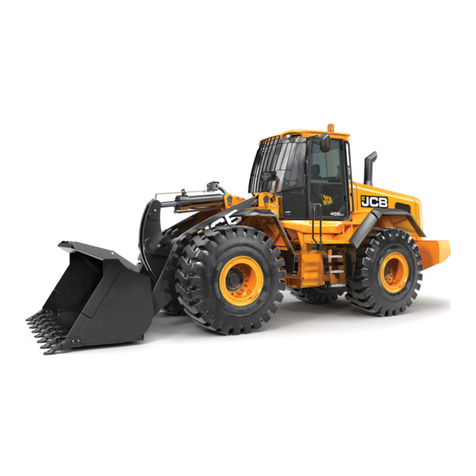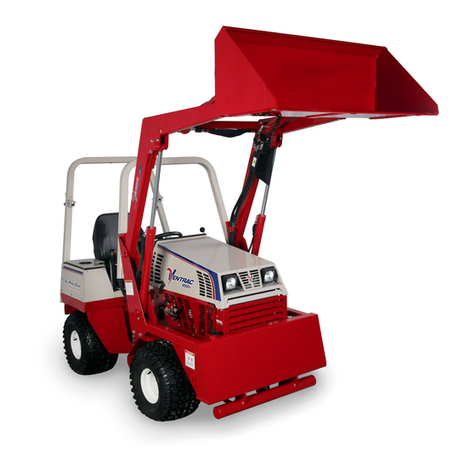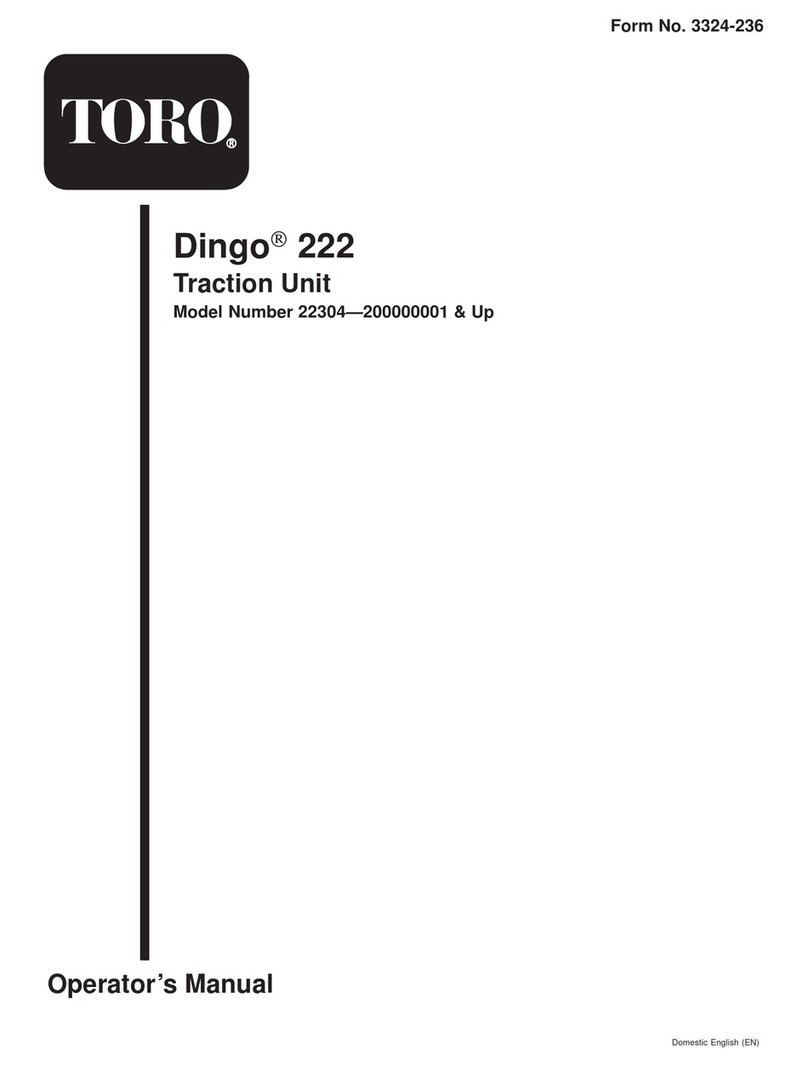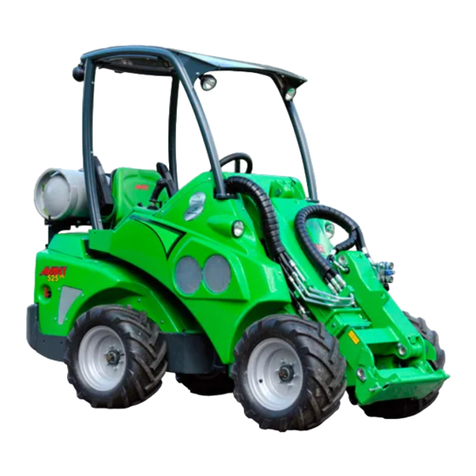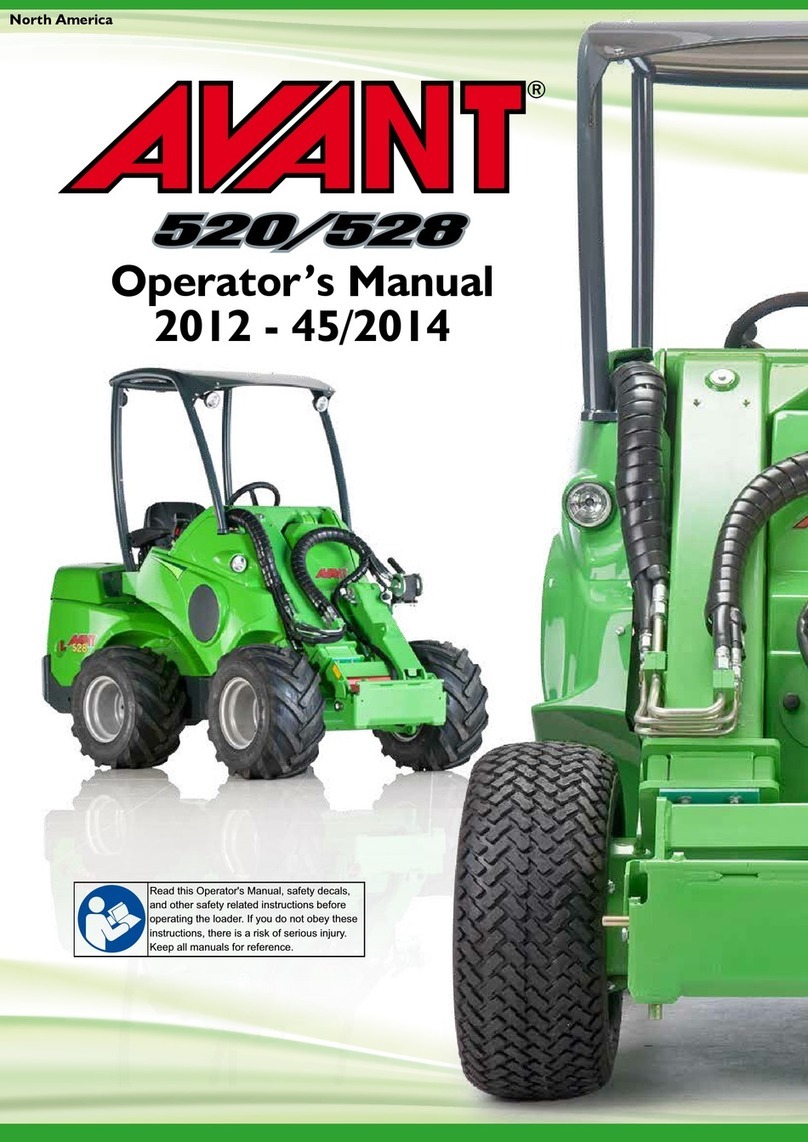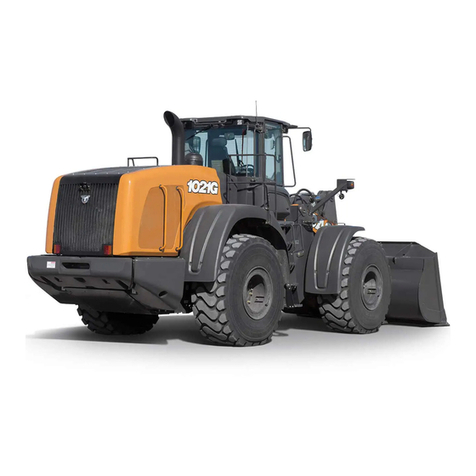Norfield magnum User manual

PARTS & OPERATORS
MANUAL
Release: 4
MAGNUM
DOOR LOADER
Eective S/N: LM-6927 Document Number: 17-301

2
First Release: July, 2007
Second Release: January, 2008
Third Release: October, 2009
Fourth Release: January 2015

3
Noreld
422 Oerson Dr.
Chico, Ca. 95928
Technical Support: (530) 891-4214 - Parts: (800) 824-6242
Serial No: _____________________
Date Sold: _____________________
Noreld
is the name that represents Quality, Reliability, Support, Innovation and True
Customer Service. We have been dedicated to providing quality products and excellent
customer service for more than 40 years.
Noreld
has earned a reputation in the pre hang-
ing industry for seing standards for reliable machinery, full technical support, machine
parts, a full line of industrial woodworking tools and supplies and a team of customer care
representatives to support you! Our factory-trained technical personnel are ready to assist
you on the telephone or in your shop.

4
INTRODUCTION
Congratulations on your purchase of your Noreld Magnum Door Loader. You can be assured that
this machine was constructed and assembled to a set of rigid specications by trained workers who
take pride in the quality of their work. To safely operate this machine it is vital that you read and
understand all safety and operator instructions.
The Noreld Magnum Door Loader is designed to work with the Signature Series Magnum Door
Machine, or in conjunction with most other vertical door machines not supplied by Noreld Indus-
tries. It provides an economical solution for feeding doors on edge eliminating the need to lift, turn
and feed each door.
Prior to shipment from our factory each Noreld machine is put through a series of tests and inspec-
tions to insure that you are provided with the highest quality product for your business.
In order for this machine to provide you with a long period of continuous and trouble free service,
it is necessary that it be properly installed, operated, and maintained. We urge you to study the
contents of this manual and be guided by the suggestions herein. We strongly recommend that a
periodic review of the contents of this manual be made to maintain a high level of competency when
operating this machine.

5
TABLE OF CONTENTS
Safety
Lockout Procedures
Specications
Parts Replacement Policy / Warranty
Contact and Order Information
Installation
Operation
Trouble Shooting
Parts Drawings
6
9
11
12
13
14
22
24
29

6
SAFETY
Safety considerations are an important element
of machine installation and operation. Active-
ly maintaining a safety mind set about yourself
and others while working around or on the
equipment is of primary importance. Operators and
maintenance personnel should refer to the safety informa-
tion on the following pages to familiarize themselves with
warning labels and practices providing for safe operation
and servicing of this machine.
Danger indicates an imminently hazardous situation, which if not
avoided WILL result in death or serious injury.
Warning indicates a potentially hazardous situation which, if not
avoided, COULD result in death or serious injury.
Caution indicates a potentially hazardous situation which, if not
avoided MAY result in minor or moderate injury. It may also be
used to alert against unsafe practices.
Caution, without the safety alert symbol, indicates a potentially
hazardous situation which, if not avoided M AY result in property
damage but not personal injury.
Notice indicates important information that if not followed may
CAUSE damage to the equipment.
Mandatory Action conveys an action step that should be taken to
avoid the hazard.
SAFETY

7
SAFETY
Do not operate this machine unless all guards are in place and working cor-
rectly. If any guards or hazard labels are missing or damaged call Noreld’s
Service Department immediately and request a replacement at (800) 824-6242.
Read and understand the operator’s manual before using this machine. Fail-
ure to follow proper operating instructions could result in death or serious
injury.
This machine, when in operation, produces wood chips and dust. The op-
erator and all persons in the work area MUST wear approved eye protection
with permanently aached, rigid plastic side shields. These safety glasses
must conform to ANSI Z87.1 standards and will have “Z87” printed on the
lens.
This machine, when in operation, produces a noise level greater than 85dB.
The operator and all persons in the work area MUST wear approved hearing
protection. OSHA has determined that a noise level in excess of 85dB aver-
age in 8 hours can cause permanent hearing damage. We recommend that
hearing protection be worn even if the decibel level is below 85dB.
Certain types of wood dust can cause allergic reactions. Sawdust has been
determined to be a Group A carcinogen by the International Agency for Re-
search on Cancer (IARC). A dust collection system or an approved personal
dusk mask MUST be used when operating this equipment.
This machine has moving parts that loose clothing and long hair can become
entangled in. Take care not to become caught between the work material and
the feed mechanisms or any other moving components.
Before beginning any service repairs, general maintenance, or adjustments
you MUST follow proper Lockout Tag-Out procedures. OSHA regulation
1910.147 establishes a minimal lock-out tag-out procedure to assist employ-
ers in the development of their own procedures.
Only trained personnel that have read and understand the operator’s manual
and all the safety precautions may operate this machine.

8
Inspect the machine at the beginning and end of each shift for damaged or
cracked components such as, but not limited to, saw blades, router bits, drill
bits, and boring bits.
Never leave this machine unaended while it is in operation. Make sure that
all electrical and air is in the o position when the machine is not in use or is
unaended and that any cuing blades have come to a complete stop.
Do not aempt to clean material from this machine until all the cuing blades
have come to a complete stop. Even when the machine has been turned to
the “o” position it may take up to several minutes for the blades to coast-
down to a complete stop.
Woodworking machinery is inherently dangerous, common sense and good
safety practices are your best defense against injury.
If you have any questions regarding the correct operation of the machine
and safety procedures in this manual call the Noreld Service Department at
(800)-824-6242
SAFETY

9
LOCKOUT PROCEDURES
All employees will comply with these procedures. All equipment and/or circuits will be
locked out to protect against accidental or inadvertent operation when such operation of
the equipment and/or circuits could cause injury to personnel. Do not aempt to operate
any switch, valve, or other energy isolating device bearing a lock.
Lockout Responsibility
The primary responsibility for the proper lockout of equipment and /or circuits on a
maintenance or repair project belongs to the project Supervisor and/or Foreman. How-
ever, this does not alleviate any sub-contracted maintenance or repair personnel from
insuring that proper lockout/tagout procedures are followed at all times. The Supervi-
sor and/or Foreman will insure that each employee is properly instructed in the safety
signicance of lockout procedures.
Preparation for Lock-Out of Circuits and Equipment
In the following steps, when more than one individual is involved with the project and
required to lock out the equipment and/or circuits, each employee will place their own
personal lock on the energy isolating devices. A lock for each individual involved is the
preferred method for locking out energy sources. If this not feasible, the designated in-
dividual to the work crew (e.g. the project Supervisor or Foreman) with complete knowl-
edge of who is on the crew may be designated by the work crew as the individual re-
sponsible for carrying out all steps of the lockout procedure. That individual will inform
the work crew when it is safe to work on the equipment and/or circuits. Additionally,
the designated individual will not remove a crew lock until it has been veried that ALL
individuals are clear.
1. Notify all aected employees and customers that a lockout is required and the reason
for it.
2. If the equipment is in operation, after obtaining approval, shut it down by the normal
stopping procedures.
The following is an example of the minimum requirements for a lockout/tagout
procedure. Noreld strongly recommends that your company establish its own wrien
procdeure. OSHA Regulation 1910.147 establishes a minimal lockout/tagout procedure
to assist employers in the development of their own Lockout Procedures
LOCKOUT PROCEDURES

10
3. Operate the switch, valve or other energy isolating devices so that all energy sources
(electrical, mechanical, pneumatic, hydraulic, etc.) are disconnected or isolated from
the equipment and/or circuits. Stored energy, such as that in capacitors, springs,
elevated machine members, rotating ywheels, hydraulic systems, and air/gas,
steam or water pressure, etc., must also be dissipated or restrained by methods such
as grounding, repositioning, blocking, bleeding down, etc.
4. All aected employees are then required to lockout the energy devices with their
individual lock.
5. After insuring that no personnel are exposed and as a check on having disconnected
the energy sources, operate the push buon or other normal operation controls to
make certain the equipment will not operate. In the event that electrical circuits have
been locked out, insure that the circuits are de-energized by applying an appropriate
voltage tester that itself has been tested on live circuits. Be sure to return all operating
controls to the neutral position.
The equipment and/or circuits are now locked out.
Restoring Equipment and/or Circuits to Service
1. When the job is complete and the equipment or circuits are ready for testing or nor-
mal service, check the equipment and/or circuits to insure that no one is exposed.
2. When the equipment and/or circuits are clear, remove all locks. The energy isolating
devices may be operated to restore energy to the equipment and or circuits.
LOCKOUT PROCEDURES

11
SPECIFICATIONS
SPECIFICATIONS
Machine Capabilities
Door Width 1’-0” to 4’-0”
Door Height 4’-6” to 9’-0”
Door Thickness 1-1/8” to 2-1/4”
Infeed Height 12” Above Floor
Outfeed Height 16” to 20” Above Floor
Maximum Stack Height 48” Including Pallet
Maximum Stack Weight 2800 lbs.
Air Requirements None
Shipping Weight Approx. 1800 lbs.
Minimum Floor Space
Requirement (W x L x H) 8 x 7-10” x 6’
Specications
The Magnum Door Loader was designed as a companion machine to the Magnum Door Machine.
It is specically used to load doors onto the Magnum
Electrical Requirements
AC Line Phase Her Amperage
208 3Ø 60Hz 15A
220/240 3Ø 60Hz 15A

12
PARTS REPLACEMENT POLICY
WARRANTY
The following will explain Noreld’s policy for handling warranty claims. Our “Limited Warranty” is
stated below for your reference.
Our warranty covers the replacement of defective parts: however, the labor to replace the parts on the
machine is not included.
Upon notication of a warranty claim, Noreld will either refer the customer to a regional repair facility
or replacement parts will be shipped from the factory. Parts shipped from the factory will be invoiced
to the customer’s account until the warranty claim is veried. To obtain verication, the defective parts
must be returned to Noreld within thirty (30) days from the date of the claim for inspection. Before
returning the defective parts, please contact Noreld to obtain a “Return Material Authorization Num-
ber”.
All parts manufactured by Noreld and found to be defective will be given appropriate credit. All parts
not manufactured by Noreld are covered by their respective manufacturer’s warranty and will be sent to
the original manufacturer for credit. When, and if, credit is issued to Noreld, we will in turn issue credit
to your account.
LIMITED WARRANTY
Noreld warrants any and all such parts manufactured by them against defects in material or workman-
ship for a period of two years from the date of purchase. Noreld’s liability under this warranty shall
be limited to replacing free of charge, F. O. B. Chico, California, any parts proved to be defective within
the period of the warranty. Noreld will not be responsible for transportation charges or consequential
damages.
Noreld will not in any case or under any circumstances be liable or responsible for any injuries to per-
sons or property suered as a result of the use or operation of the machine, or losses or costs resulting
from any period of non-operation for any reason.
Parts which are claimed to be defective, but show tangible evidence of abuse or negligence will not be
replaced on a no-charge basis.
Noreld reserves the right, at its own discretion without notice and without making similar changes in
machinery previously manufactured, to make changes in material, design, nish and/or specications.
Any changes, alterations or installation of additional equipment to this machine without rst obtaining
wrien consent from Noreld may void this warranty. Determination of the eect of any alteration on
this warranty is left to the discretion of Noreld.
Noreld makes no wrien or implied warranty with respect to electrical equipment, including motors or
other purchased components used in the manufacture of the machine. All such parts are covered by their
respective manufacturer’s warranty. We do endeavor, at all times, to purchase only those components
manufactured by responsible manufacturers which we have found to be reputable in their handling of
warranties.
Noreld expressly disclaims any warranty, expressed or implied, other than those which are expressly
made in this limited warranty.

13
CONTACT & ORDER INFORMATION
CONTACT & ORDER INFORMATION
Noreld is the name that represents Quality, Reliability, Support, innovation and True Custom-
er Service. We are dedicated to providing world class customer care. Noreld has been provid-
ing quality care in the pre-hanging door industry for over 40 years and has earned a reputation
for seing the standard for innovation, reliability, full technical support, machine parts and a
full line of industrial woodworking tools and accessories. Our team of Customer Care Repre-
sentatives is available to support you.
If you need to contact the Noreld Service department, please have the following information
available:
• Serial Number of the machine.
• Model of the Machine.
• Date of purchase or date that the machine was installed.
• A description of the problem and in what part of the machine the problem is occurring.
For warranty issues and service questions contact the Noreld Service Department at (800) 824-6242.
To order replacement components and consumable items, such as drill and router bits, saw
blades and other accessories, contact a Noreld Tools and Supply Customer Care Representa-
tive at (800) 824-6242.

14
INSTALLATION
SECTION 1
INSTALLATION
1-1 SHIPPING DAMAGE AND SHORTAGES:
Before and after the crated machine is unloaded from the truck the crate should be inspected for any signs
of damage. If suspected damage is found it must be noted on the bill of lading and signed by the driver and
the person receiving the shipment. After the machine has been un-crated inspect it and all other contents
of the crate for shipping damage. In the event that damage has occurred in transit, notify the freight carrier
and Noreld Industries immediately. Inspect the complete shipment against the packing slip to make sure all
items listed are accounted for. If any shortages are noticed, the freight carrier and Noreld Industries should
be notied immediately. While any shortages, other than back orders, or freight damages are the complete
responsibility of the freight carrier, Noreld Industries desires to be notied so that the replacement of lost or
damaged parts can be expedited.
1-2 INSTALLATION:
The information in this section refers to the installation and setup of the Noreld Magnum Door Loader.
Since the purchase of this machine does not include a start-up by a eld technician, it will be necessary to
follow these instructions as closely as possible to insure proper operation.
In the unlikely event that you have a problem during this process, you may contact the Noreld Service
Department, at (800) 824-6242, for technical assistance.
1 Uncrate the machine. Remove the top and sides of the crate. Remove the plastic cover and the box
of miscellaneous parts. Inspect the machine for loose or damaged parts. Inventory the box parts.
2 Remove all of the straps, bolts and shipping restraints that aach the machine to the crate base.
3 With the control stand still in the shipping position, insert the forks of a forklift into the lifting
brackets as far as possible and lift the machine out of the crate.
Figure 1-1 shows your Magnum Door
Loader as it should look when it comes out
of the crate. The two lifting brackets are
used to lift the machine out of the crate and
place it in position. In the event it is
necessary to lift the machine from the other
side, the lifting brackets can be turned
around and mounted facing the Other
direction.
FIGURE 1-1
CONTROL STAND IN
SHIPPING POSTION
LIFTING BRACKETS

15
INSTALLATION
1-3 POSITIONING
With the use of a forklift move the machine to its permanent position within your shop. This space should
have been predetermined and electrical power should be installed prior to the machines arrival.
To complete the installation and setup of your new Magnum Door Loader the following list of tools will be
necessary.
• Hex key wrench set from 1/8” – 5/16”.
• Open end wrench sizes, 7/16”, 9/16”, (2) 3/4”, 1 1/8”, 1 1/2”, or, 2 adjustable wrenches that will cover
the same sizes.
• Side cuers
• Tape measure.
1 Place the machine at the infeed end of the Magnum (or other vertical door machine) and align the
vertical edge of the roller tray with the front face of the Magnum frame. See gure 1-2.
2 Dimension (A) is the dimension between the Magnum frame and the Magnum Door Loader frame.
The recommended distance is 18”. However, this dimension can be as small as 12” or as large as
needed to meet oor space requirements. If dimension (A) is to be larger then 30” an additional
support roller will be needed.
3 If you will be handling doors shorter then 6’ 8” the maximum length of dimension (A), with out
additional support, will be less then 30”.
(A)
ROLLER TRAY
LIFTING BRACKETS
LIFTING BRACKETS
MOUNTS
ALIGNMENT LINE
FIGURE 1-2
NORFIELD MAGNUM
TOP VIEW

16
INSTALLATION
4 Remove the lifting brackets. Remove the bolts from both ends of one of the lifting brackets and care
fully lift it o the machine.
5 Remove the bolts from the lifting bracket mount and remove it. Repeat the process for the other lift
ing bracket. See gure 1-2.
6 If there is a chance that you will move the machine again, the lifting brackets should be stored in
a safe place. In the event that you need to move a Noreld Magnum Door Loader and the lift
ing brackets can not be located, they can be ordered from Noreld Industries. The parts necessary
are, (2) 6850-130 lift bracket, (2) 6850-039 lift bracket mount, (8) ½” x 4 ½” bolts, (4) ½” x 1”
bolts, and (8) ½” nuts.
1-4 LEVELING
1 To level the frame. Loosen the lock nuts on the four one-inch diameter leg bolts. Level the long frame tubes
from front to back.
2 The side closest to the door machine should be approximately 3/16” higher then the side furthest from the door
machine. (This will be discussed further in Section 2.)
LONG FRAME TUBE
CLOSEST TO DOOR MACHINE
ONE-INCH DIA.
LEG BOLTS
(FRONT)
ONE-INCH DIA.
LEG BOLTS (BACK)
LONG FRAME TUBE
FURTHEST FROM DOOR MACHINE
Figure 1-3

17
INSTALLATION
1-5 INSTALLING LOADER BASE PLATES
During the course of normal operation the door stacks being loaded onto the
Noreld Magnum Door Loader may impact the vertical wear strips with su-
cient force to move the machine and cause misalignment with the door machine.
Installation of the four loader base plates will minimize this eect.
BASE TUBE
LEVELING BOLT
LOADER BASE
PLATE
CONCRETE ANCHOR BOLT
TOP VIEW
FIGURE 1-4
After the installation and setup procedure has been completed carefully lift each corner of the ma-
chine until the leveling bolts are high enough to slide the loader base plates under the leveling bolts.
Then let the bolt down into the center hole, as shown in Fig.1-4. This can be done using a 3 or 4 ft.
long piece of 2 x 4 or another suitable pry bar.
CAUTION: DO NOT, AT ANY TIME, PLACE ANY PART OF YOUR BODY BETWEEN EITHER THE
LEVELING BOLT, OR THE BASE PLATE, AND THE FLOOR!
Install concrete anchor bolts or studs through the two smaller holes in the loader base plates and bolt
the plates securely to the oor.
Check that the machine is still level.

18
1-6 INSTALL THE CONTROL STAND
1 Install the control stand. Unbolt the control stand from its shipping position. Carefully move
the control stand into the operating position and install the four bolts. See g. 1-5.
2 Before tightening the mounting bolts, adjust the control stand support legs so that the control
stand mounts are at against the frame.
3 Tighten the control stand mounting bolts and all six support leg lock nuts.
4 Aach the wire loom to the tie bases on the frame with the tie wraps provided
INSTALLATION
CONTROL STAND
MOUNTING BOLTS
CONTROL STAND
SUPPORT LEGS
FIGURE 1-5
1 When wiring the machine, follow all local electrical and safety codes as well as the National Electric Code
(NEC) and Occupational Safety and Health Act (OSHA).
2. Before connecting any electrical power to the main electrical enclosure, be sure that the characteristics
labeled on the enclosure match those of your service. Refer to the drawing 6850-001 in Appendix A of this
manual.
3. The electrical connection point is located in the upper right corner inside of the main electrical cabinet.
4. Route the incoming electrical power such that it comes in low along the long frame tube. It should not be
above the frame tube until it is inside the control stand. See Fig. 1-6 for electrical connections.
1-7 ELECTRICAL

19
INSTALLATION
ELECTRICAL
PANEL
GROUND
CONNECTION
POINT
CONNECT HIGHEST VOLTAGE
LEG TO TERMINAL #3
DISCONNECT
SWITCH
CONNECT THREE PHASE POWER
TO TERMINALS 1, 3 & 5
FIGURE 1-6
1 When you are condent that all of the electrical connections are correct, close the main electrical cabinet
door and tighten the screws.
2 Turn the disconnect switch to the “On” position, reset the E-stop buon.
3 Look through the window in the control panel, you should see a number of the lights on.
4 Check to see that the Run light is on, Refer to gure 5-1.
5 If the Run light is on, rotate the tilt control in the up direction briey (less then 1-sec.) and note the direction
of rotation of the motor fan. (This may require two people.)
6 The correct motor rotation is clockwise facing the fan end of the motor.
7 If the Run light does not come on, refer to the troubleshooting section of this manual.
1-8 CHECK MOTOR ROTATION
NOTE: SUSTAINED OPERATION WITH INCORRECT MOTOR
ROTATION WILL DAMAGE THE PUMP AND SHAFT SEAL

20
BEFORE YOU BEGIN
SECTION 1
INSTALLATION
The information in this manual refers to using the Magnum Door Loader with the Noreld Magnum.
While the Noreld Magnum Door Loader is designed to work with most vertical door machines currently
on the market, Noreld can not guaranty compatibility with any machine not made by Noreld
2.1 ADJUST OUTFEED HEIGHT
1 The outfeed side of the Magnum Door Loader should be 3/16” higher then the other side, refer to
section 1.4. This will cause the door to outfeed at a slightly upward angle.
2 Set the Magnum infeed bed to the height you would normally use for your standard undercut.
3 Loosen the lock nuts and adjust the tilt stop pads so the door rolls out of the Magnum Door Loader and
on to the Magnum infeed bed smoothly. See Figure. 2-1.
4 When the door is on the Magnum infeed bed it should be slightly above the rollers on the Magnum Door
Loader. Tilt up a few inches and down again to conrm that the tilt stop pads contact the stops
simultaneously.
5 Tighten the lock nut.
TILT STOP PAD
DOOR ON SENSOR
(RECEIVER)
LOCK NUT
FIGURE 2-1
Other manuals for magnum
1
Table of contents
Other Norfield Compact Loader manuals
